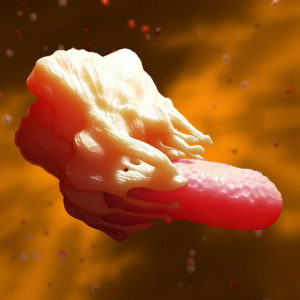Abstract
Inherited retinopathies are devastating diseases that in most cases lack treatment options. Disease-modifying therapies that mitigate pathophysiology regardless of the underlying genetic lesion are desirable due to the diversity of mutations found in such diseases. We tested a systems pharmacology-based strategy that suppresses intracellular cAMP and Ca2+ activity via G protein-coupled receptor (GPCR) modulation using tamsulosin, metoprolol, and bromocriptine coadministration. The treatment improves cone photoreceptor function and slows degeneration in Pde6βrd10 and RhoP23H/WT retinitis pigmentosa mice. Cone degeneration is modestly mitigated after a 7-month-long drug infusion in PDE6A-/- dogs. The treatment also improves rod pathway function in an Rpe65-/- mouse model of Leber congenital amaurosis but does not protect from cone degeneration. RNA-sequencing analyses indicate improved metabolic function in drug-treated Rpe65-/- and rd10 mice. Our data show that catecholaminergic GPCR drug combinations that modify second messenger levels via multiple receptor actions provide a potential disease-modifying therapy against retinal degeneration.
Introduction
Most inherited retinal degenerations (IRDs) are currently inaccessible therapeutically, comprising an unmet medical need for a substantial population worldwide. IRDs affect approximately 1 in 2000 people globally1, and often lead to blindness in childhood2. IRDs, including distinct forms of retinitis pigmentosa (RP), are associated with hundreds of distinct genetic mutations (https://sph.uth.edu/retnet/). Management of all those mutations by targeted therapies, mainly gene therapy, is likely to remain impractical and prohibitively expensive for the foreseeable future. To date, only a single gene therapy has been approved for IRDs; namely, a subretinally injectable RPE65 gene-replacement therapy, Luxturna® (voretigene neparvovec)3. The proportion of RPE65 gene mutations in IRD cohorts is only ~1%4. Although visual function improvement after treatment with Luxturna® has persisted for at least 7.5 years, it is unclear if it can prevent progression of photoreceptor degeneration5. Achieving a therapeutic effect to slow degeneration is in general a major challenge for retinal gene therapies and depends largely on intervention timing and viral distribution.
Alternatively, a disease-modifying treatment (DMT), which aims to substantially diminish pathological mechanisms that drive cells to their demise regardless of the underlying etiology, could be more attainable for larger patient populations, and could benefit more patients faster. DMTs in development often utilize drug repurposing, which can significantly reduce drug development risks, timeline, and costs6. This type of treatment could be efficacious not only for IRDs but also for other forms of retinal degeneration (RD).
RD often begins with the rod photoreceptors, with deterioration of dark adaptation and dim light vision7,8. The rod photoreceptors comprise a majority of the oxygen-using cells in the outer retina and as these cells die, particularly in RP, the outer retina is exposed to uncontrolled hyperoxia9. This oxidative stress leads to damaging effects on bystander retinal cells, particularly the cone photoreceptors. As the cones mediate daytime vision, which is crucial for modern living, the primary goal of RD therapeutics is often cone-protection9. The window of therapeutic opportunity for this is often several years9,10,11, representing the lag time between rod death and cone death.
Oxidative stress is a major pathophysiological process in RD, which promotes excessive Ca2+ influx into the cytoplasm from the extracellular environment and from the endoplasmic reticulum (ER) stores via inositol 1,4,5-trisphosphate (IP3)-mediated release12. In turn, increased [Ca2+] in the cytoplasm causes Ca2+ influx into mitochondria, which accelerates and disrupts normal metabolism leading to toxicity12,13. Since increased intracellular [Ca2+] further accelerates the production of reactive oxygen species14, a vicious cycle between oxidative stress and elevated [Ca2+] can incur. Oxidative stress can also regulate cyclic adenosine monophosphate (cAMP) signaling, another intracellular second messenger whose increased activity has been associated with RD progression15. cAMP is coupled with protein kinase A (PKA) activity, which, among its many signaling processes, can stimulate L-type calcium channels and Ca2+ influx16. Studies have shown that calcium-channel blockers can delay degeneration in Drosophila17 and mouse RD models18. Cell protective effects have also been demonstrated with drugs that indirectly mitigate intracellular Ca2+ and/or cAMP signaling via G protein-coupled receptor (GPCR)-actions19,20. GPCRs mediate a plethora of physiological functions and constitute the largest family of druggable targets21.
Among GPCRs, catecholamine-neurotransmitter receptors are especially highly utilized in pharmacotherapy due to their numerous effects on neuronal signaling. Agonists of the D2-like dopamine receptors (i.e., D2/D3/D4 receptors) have shown neuroprotective potential in preclinical settings22; however, clinical studies to date have resulted in inconclusive outcomes22,23. Adrenergic receptor antagonists, such as α1– and β1-blockers, can inhibit NADPH oxidase, leading to diminished generation of superoxide radicals24,25. These antagonists exert cardiac cell protection24,26,27, and potentially retinal neuroprotection26 in vivo. The α2-agonist brimonidine is a glaucoma drug that displays intraocular pressure-independent therapeutic effects in multiple retinal neurodegeneration paradigms20. α2-agonists inhibit cAMP production and calcium channels, decreasing neurotransmitter release in adrenergic neurons28. In Phase II trials, intravitreal-implant delivery of brimonidine moderately slowed progression of lesion size in dry age-related macular degeneration-associated geographic atrophy20,29. Overall, treating neurodegeneration, including RD, remains a major clinical challenge. It is well-accepted that multitarget therapies may be needed to achieve stronger therapeutic effects in complex diseases such as RD27,30. This is attributable to the flexibility and redundancy of biological systems, particularly in the nervous system, that allows them to compensate if just a single element is targeted27.
We have developed a systems pharmacology-based DMT that utilizes three simultaneously administrated GPCR drugs19,31,32, which reach the eye after systemic administration32 and which target receptors that are expressed in both mouse and human retinas19. Tamsulosin (T) blocks the Gq-linked α1-receptors; Metoprolol (M) blocks the Gs-linked β1-receptors; and Bromocriptine (B) activates the Gi-linked D2-like dopamine receptors. Mechanistically, Gq-receptor-antagonism decreases the IP3-mediated release of Ca2+ ions from the endoplasmic reticulum (ER), while both Gs-receptor-antagonism and Gi-receptor-agonism lead to decreased adenylyl-cyclase (AC) activity and turnover of intracellular cAMP. We hypothesize that suppressive effects on these second messenger pathways protects against RD32. Indeed, combined “TMB treatment” at low doses of each compound prevents acute bright light-induced RD in mouse models of Stargardt disease19,32, Oguchi disease31, congenital stationary night blindness31, and in wild-type (WT) albino mice19. The required doses for a therapeutic effect against light-induced RD are much larger if the same drugs are administered individually as a monotherapy, suggesting therapeutic synergy by the TMB drug cocktail19. However, the prior evidence of efficacy is considered preliminary, based solely on acute administration. Many acutely beneficial treatments can in fact be harmful in prolonged use33. The current study provides the first highly translationally relevant proof-of-concept for the efficacy of TMB treatment during chronic administration in multiple types of IRD models.
Results
Dietary TMB treatment attenuates the aberrant retinal transcriptome, slows retinal degeneration, and improves visual function in the rd10 mouse model of autosomal recessive RP
Retinal protection by the TMB drug combination was demonstrated in an acute light-induced RD paradigm, wherein drugs are administered prophylactically prior to damage induction19,31,32. Moving towards clinical translation necessitates comprehensive evaluation of drug efficacy after prolonged administration in chronic animal models that mirror human disease more directly. Furthermore, as the goal of a DMT is to decrease pathology in an etiology- or mutation-agnostic manner, we needed to test the efficacy of TMB treatment in several distinct disease paradigms where the time-course and mechanisms of the RD differ.
To begin exploratory chronic drug trials in mouse models (Fig. 1A; Supplementary Data 1), we needed to establish a suitable method of drug administration. Based on our prior study, T, M, and B are quickly eliminated from circulation after an intraperitoneal administration in mice32, suggesting a short half-life of elimination. Accordingly, the drugs were incorporated into standard mouse chow (serving as vehicle, abbreviated in figures as “veh”) as follows: T, 0.05 mg per g of standard chow (0.05 mg/g); M, 2.5 mg/g; and B, 0.25 mg/g. As the distinct mouse models used in the study all were based on the inbred C57BL/6 J mouse-strain background, we used young adult wild-type (WT) male C57BL/6 J mice for testing drug concentrations in the serum and target tissues. After three full days of acclimatization to the diets, samples of serum, retina, and eye cup were collected. Drug levels were assayed using LC/MS (Fig. 1B; Supplementary Data 2). In samples collected in the middle of the active period (12 a.m.), the doses of T and M in the serum were 12.8 ± 2.33 ng/ml and 2361 ± 614 ng/ml (mean ± SD), respectively. The concentrations of T and M in eye cups were much higher than those in the serum, suggesting melanin-binding and drug retention in the melanin-rich eye34,35. Detection of T and M levels in serum was also used as a readout to test the utility and uniformity of the dietary drug-administration strategy. Additional experiments with serum samples collected at the end phase of the active period (6 a.m.; T, 13.1 ± 3.7 ng/ml; M, 759 ± 644 ng/ml) and in the middle of the inactive period (12 p.m.; T, 9.84 ± 8.1 ng/ml; M, 803 ± 761 ng/ml) indicated constant drug exposure (Supplementary Fig. 1A); and the levels of these drugs remained at a high range relative to clinical doses derived from literature reports36,37. Published clinical pharmacokinetic (PK) data suggest up to 18 ng/ml (Cmax) serum level for T36, and 340 ng/ml (Cmax) for M37 when acute oral administration was used with relevant doses for the treatment of benign prostate hyperplasia (T) and cardiovascular indications (M). While we could detect chromatographic peaks attributable to B in serum samples, the sensitivity of our method did not always reliably allow its quantification. Clinical PK data suggests that B serum levels during continuous treatment of Parkinson’s disease can be relatively low; i.e., <5 ng/ml38. However, we measured consistent B concentrations above the detection limit in the samples of retina and eye cup (Fig. 1B). Throughout the studies, we also followed body weight gain as a sensitive marker of appetite and general animal wellbeing and found no distinction between animals on control/vehicle-diet versus the TMB treatment (Supplementary Fig. 1B–D). Overall, dietary TMB administration proved to be applicable for drug-efficacy testing in chronic mouse RD paradigms, although serum level variance with the method is large and the drug levels tested at single time points in mice are not directly comparable to typical exposure patterns in humans…







